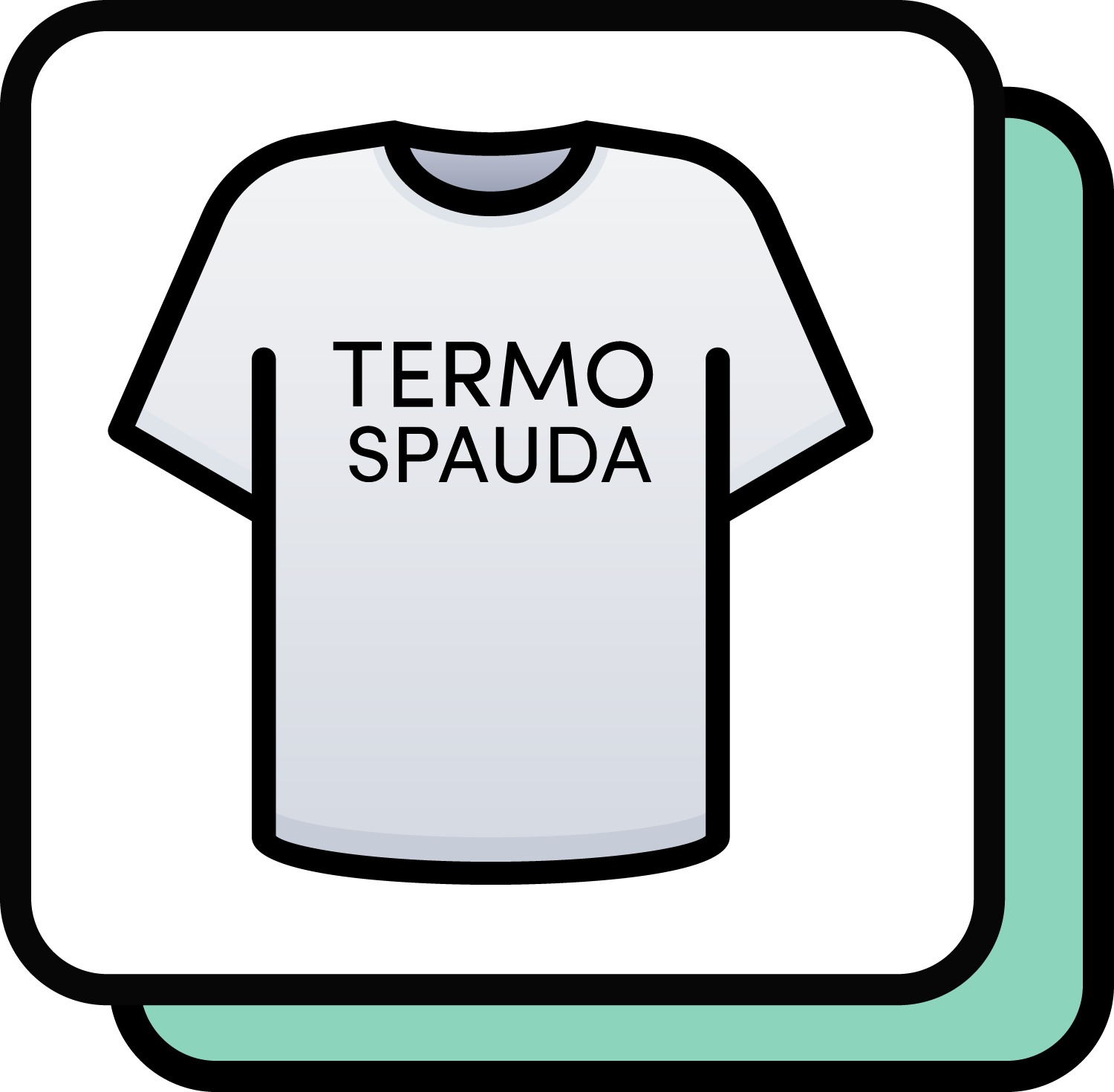Vinyl heat transfers

Application
Unlike most other technologies, thermal printing is well compatible with synthetic materials, polyester. Due to its cost-effectiveness, this method is often used in the production of promotional clothing.
If the main component of the fabric is cotton, then it shrinks after washing, and the film does not change, so the print on the washed clothes may become wrinkled or peel off over time.
Some of the films have an adhesive surface, which allows them to be better applied to cotton products. Other films are more compatible with polyester.
Thermal printing can be printed and plotted or only plotted (cut) from colored film. During production, you have to peel off the unnecessary area after cutting - respectively, complex and small designs take longer to peel and are more expensive to produce. For this reason, this method is more often used to produce simpler or larger designs.
Advantages:
- One of the most durable ways to print on polyester.
- One of the more convenient ways to produce press in non-standard positions.
- If the film is properly matched with the fabric, it is characterized by long-term durability.
- Relatively inexpensive way of printing.
- Suitable for both small and large quantities. Small quantities do not require extensive preparation.
- Due to the variety of films, it is possible to use them widely, to obtain prints of non-standard colors and textures (e.g. reflective effect, flock, glitter, etc.).
- Relatively fine and accurate details are obtained.
- Simple designs can be produced quickly.
Disadvantages:
- Designs are heat pressed, so imprints may remain (usually disappear after washing).
- Designs with many small details can be difficult or uneconomical to produce.
- Certain films have a sticker effect (feel).

File requirements
A quality vector file is required for production. Available formats: PDF, AI, EPS, SVG, CDR
Pantone CMYK color mode is required.
Texts must be skewed. Otherwise, the text displayed to the customer and the manufacturer may differ.
Production process
The preparation depends on the complexity of the designs, the selected film and the known quantity. The smaller the designs and the more details, the longer it takes to peel and, accordingly, to produce.
-
Using a vector file in the program, we select the desired dimensions. We are preparing cutting lines for plotting.
-
We choose the used film. This can be white - printable or one color (texture, etc.) We put it on the plotter (printer) and start the program.
-
We cut off the cut part of the film and transfer it to peeling. Unnecessary part of the film is peeled off. Designs are prepared in a mirror manner.
-
After preparing the design, we check whether we have missed anything. We crop to make it easier to choose a position.
-
We clean the fluff from the garment and place it on the thermal press, adjust the temperature and compression. We put the thermal film on the set position.
-
We press according to the requirements given by the film manufacturer and choose the cooling time accordingly. We peel off the carrier film and repeatedly press the design so that the film adheres tightly and adheres to the surface of the fabric.
-
We hand over the finished garment for steaming - the pressure marks are reduced.
The prices of prints and clothes are negotiated individually. We will advise you, help you choose clothes that meet your needs in a short time and choose the most optimal printing method.
You can inquire about prices and deadlines:
+37063077733 arba [email protected]
.jpg)
.jpg)
This is one of the most popular methods of printing on textiles. It is not surprising, because this method is suitable for both large and small orders. Printing can be done quickly and is suitable for various materials. In addition, it is one of the cheapest printing methods. However, there is often a myth that this print is of low quality and short-lived, but our long-term experience shows that it is properly done and maintained (clothes with this print must be washed at a temperature no higher than 30 degrees Celsius, drying in a clothes dryer is not recommended) and choosing high-quality films - can be durable and quite long-lasting. We have also found it to be one of the best ways to print on sportswear, workwear, jackets that contain polyester. For cotton clothes, this printing method is also suitable, but for them we usually recommend choosing direct (DTG) printing, and for large orders - screen printing.
How is thermal printing done?
Designs are carved on a special thermal film with a plotter, which are attached to the textile with the help of a hot press.
Where to get clothes for the press?
In our online store, we offer a wide selection of high-quality clothes for printing. During the time of our activity, we have selected the best quality suppliers from Europe. If you can't find the model, color, design, silhouette of the clothes you want in our extensive online store catalog, we can order clothes especially for you. If you sell clothes with printing - we can offer you a print on demand (POD) business model. This way you don't need to store the clothes, we will make them when we receive the order from the customer, prepare it for shipping and send it to your end customer. In this way, you will avoid additional financial risks. We are always looking for new, creative wives who want to collaborate with us. If you don't have your own online store, you can sell your designs on our website, and if you don't have designs, just a great idea, we'll help you create them. We always strive to work quickly and with quality, we advise on all issues that arise, so if you are interested in cooperation with us - contact us by phone, e-mail. by mail or visit our physical store and tell us your thoughts over a cup of coffee or tea.
